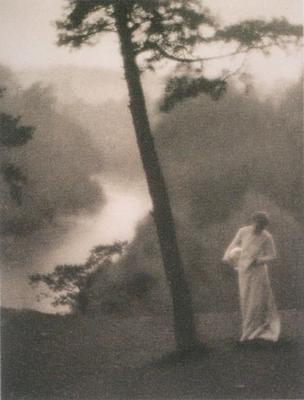
Limitations of the Medium
"Photography. . . finds its raison d'être, like all media, in a complete uniqueness of means. . . The full potential power of every medium is dependent upon the purity of its use." —Camera Work, Numbers 49-50, June 1917
In the United States, the Clarence H. White School of Photography, as well as Alfred Stieglitz's 291 Gallery and his photographic quarterly Camera Work, helped to establish modern art and photography. While Pictorialists such as Stieglitz and White provided a conscious attention to the fine print related to other art media into the early twentieth century, early modern photographers worked within the limitations of the medium, creating finely crafted prints in the darkroom. These artists continued to further modern photography as an individual means of expression while establishing the tenets of modernism.

Mais fotos de Clarence H. White

No comments:
Post a Comment